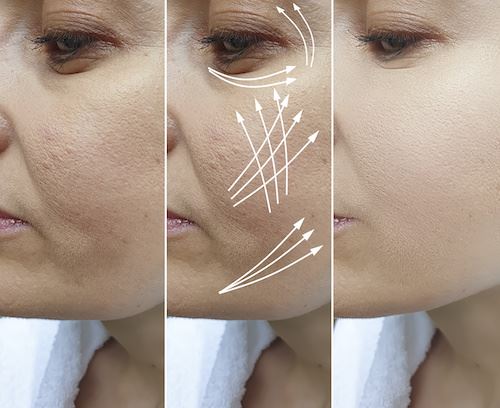
Sagging skin is one of the most common skin concerns people have across the country. Your skin will inevitably change as you get older, but you’re still never ready for the moment when you see the skin drooping around your eyes, mouth or other areas. The earlier you start working toward firming up your skin, the better the results will ultimately be.
There are plenty of over-the-counter skin care products to consider, but most of them aren’t as effective as they claim to be. Surgery is another option that many people stay away from because it’s invasive and could leave other marks on the skin. A fractional CO2 laser treatment has become widely regarded as one of the top options to treat and reverse aging skin. Here’s what you need to know about the procedure and whether it’s right for you.
Why Your Skin May Sag
According to the U.S. National Library of Medicine, changes in a person’s skin are related to their nutrition, genetic makeup, environmental factors and other factors. However, the most impactful factor for a person’s skin changes is sun exposure. If you experienced sun-damaged skin at an early age, you may be seeing the consequences of it now as you get older. Not only will the sun-damaged areas possibly have pigmentation, but they also may be more wrinkled than other areas.
Excessive sun exposure can significantly alter the skin’s elasticity and strength. This process is called elastosis and can create a more leathery appearance and feel on the skin exposed heavily to the sun. While the skin may not start sagging immediately or even within a few years, chances are sagging will be more extreme in those areas as you get older. However, as stated by the U.S. National Library of Medicine, sun exposure is just the main factor, not the only factor, that causes sagging skin. You can have the best skin care regimen throughout your life and still experience it if it’s in your genes.
Can You Slow Down Or Reverse Sagging Skin?
The good news is if you catch your droopy skin early enough, you may be able to slow it down. The longer you wait, the more treatments you’ll likely need since it will be more difficult to tighten it up. However, it’s always worth visiting your medical professional for advice no matter your age or how severe the sagging is. The main idea is to boost collagen production in the skin, which restores its youthful appearance. Collagen production naturally slows down as you get older, so keeping the body producing it can lead to tighter skin.
So how can you boost collagen production? The most effective way is with laser skin resurfacing treatments. Topical creams are also available, but most of them aren’t nearly as effective as they claim and can cause more harm to the skin than anything else. The idea of laser skin resurfacing is to use laser light to help the body speed up collagen and elastin production and keep those levels high for many months later. The non-invasiveness of the procedure is what attracts people to pursue treatments.
How Laser Skin Resurfacing Works
Laser skin resurfacing has quickly become a popular treatment option for people who want to restore their youthful appearance. A single fractional CO2 laser treatment can yield dramatic results that are noticeable within a week. However, the long-term benefit is why people opt for the treatment. Not only can laser skin resurfacing tighten up sagging skin, but it can also improve pore size, eliminate pigmentation, remove skin irregularities, improve skin texture, reduce acne scarring and more.
The laser skin resurfacing process is safe and effective for most people and is the most effective treatment option for tightening loose skin, according to the American Academy of Dermatology. The process involves a medical professional sending a laser beam through the skin’s layers that create tiny columns similar to a polka dot print pattern. Your body will then naturally repair those columns by replacing the old skin with new skin without damaging any surrounding skin. It’s the skin’s healing process that kickstarts elastin and collagen production and creates the gradual results you desire. The best part about it is the collagen and elastin production will continue for up to six months so your skin will continue improving during that time.
Post-Care Tips For The Spring And Summer Seasons
Once people decide they want to pursue a fractional CO2 laser treatment, the next question revolves around the best time of year to get it done. While the treatment itself yields very little discomfort, skin sensitivity is possible afterward. It’s recommended to stay at home for at least a week after your session to allow the skin to heal properly. It will be sensitive to the sun, so avoiding sun exposure as much as possible is important.
With those factors in mind, it’s still possible to get a laser skin resurfacing treatment in the spring or summer seasons. Look ahead at any planned trips or vacations you have coming up and schedule your treatment around them. Visiting your medical professional to set a timeline is important since there are some things you may need to do with your skin before your appointment. Every person’s skin is different, so follow the CO2 laser post treatment recommendations from your medical professional closely to avoid any unwanted side effects.


